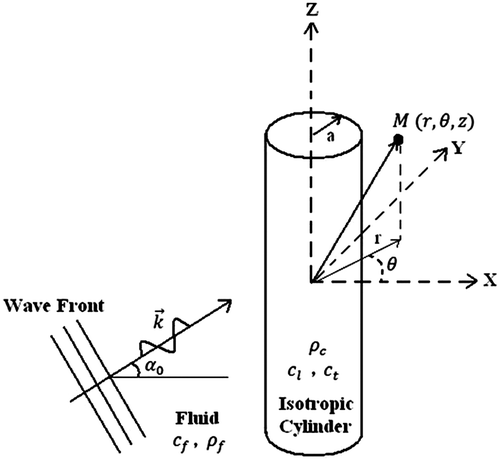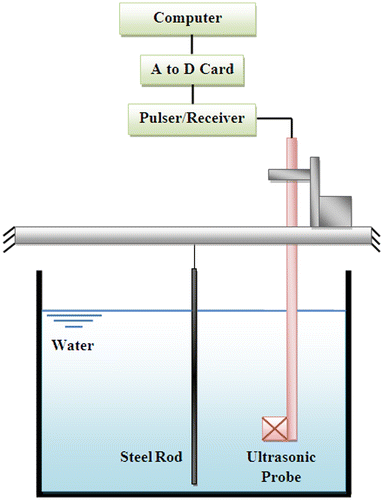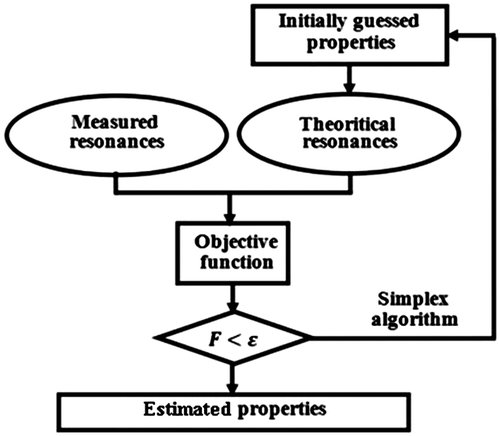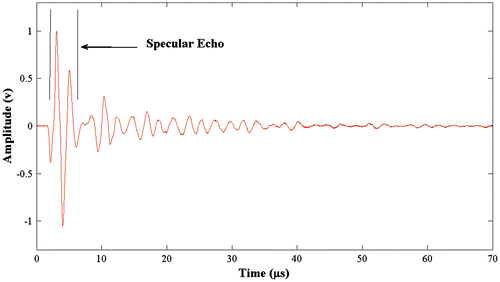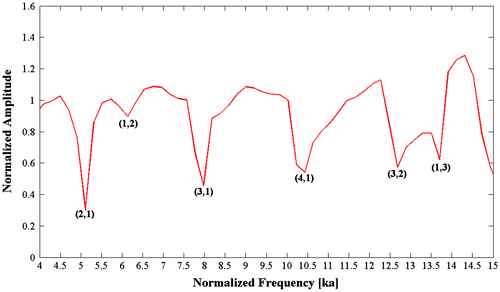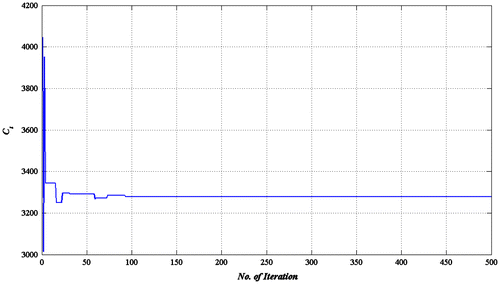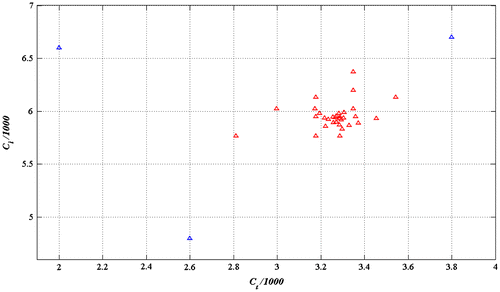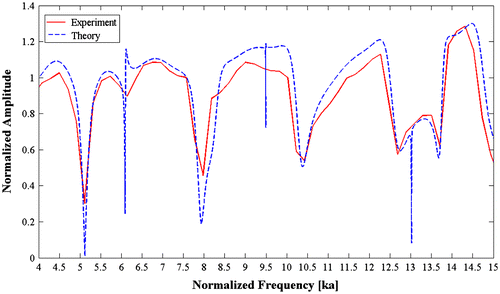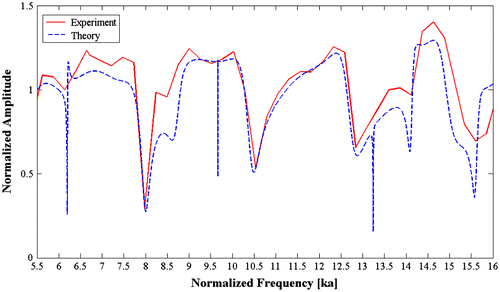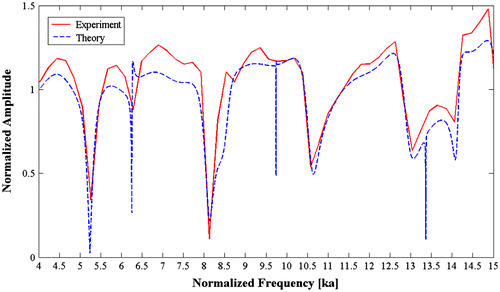Figures & data
Table 1. Material properties of steel cylinders.
Table 2. Resonances of steel cylinders.
Table 3. Calculated wave velocities of steel cylinders by using the simplex and GAs.
Table 4. Calculated wave velocities, percentage of error and number of iterations by using GA and considering different number of experimental resonances, Mat. 1.
Table 5. Calculated wave velocities, percentage of error and number of iterations by using simplex method and considering different number of experimental resonances, Mat. 1.
Figure 11 Convergence zone for Mat. 1 using simplex method. Initial values leading to divergence are marked by a cross (×) and the area confined by cross signs is the convergence zone.


